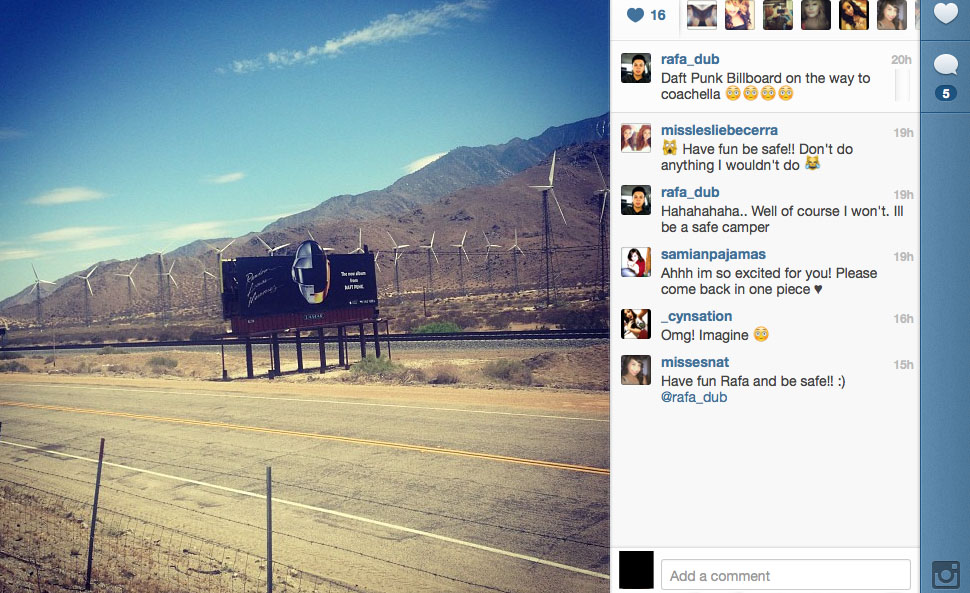Daft Punk’s lessons for employers
Daft Punk's success of "Get Lucky" was anything but lucky. Its marketing strategy is a genius symphony of media use and seduction. And that can be applied to your talent attraction efforts.
"Get Lucky" is a song by French house music duo Daft Punk. To maximise reading pleasure, listen to the song here.
Let’s talk about the basics of talent attraction first. Unfortunately, there are still a lot of HR professionals who believe that once you’ve defined your EVP and developed a few employer branding and recruitment advertisements based on it, you’re ready to keep your best people and attract new talent. Wrong. That is old school. That is marketing by interruption. In 2014, it shouldn’t be you telling who you are. It should be your current and potential employees and their influencers experiencing and promoting your employer brand. That’s exactly what Daft Punk did by promoting their new song "Get Lucky", last year.
First of all, Daft Punk put their content in the right place, at the right time where audience are most receptive to it. Secondly, they provide snippets of information about their new song - just enough information to get fans spreading the word online.
If you’re going to remember anything after reading this blog, make it this…
1. Think context, then content.
2. Seduce. Don’t sell.
3. Let the community do the work for you. It’s a lot more effective than DIY.
Think context, then content.
No marketing effort will compensate for irrelevance. Daft Punk ditched the conventional 360-degree “integrated marketing” approach. Instead, the band’s marketing team chose a rare but strategically planned combination of traditional and online (social) media. For example, Daft Punk embraced a very old-school medium: an outdoor billboard to promote its album. A billboard is not interesting at all but what’s interesting is that it was placed on the road to Coachella Valley Music and Arts Festival. Why would Daft Punk do that?
Firstly, it is because Coachella goers are already music lovers and they are more likely to react to Daft Punk’s new billboard, which became the fodder for online conversation as fans snapped photos and shared it via social networks.
Secondly, the billboard placed on the road to Coachella reaffirms the festival goers’ decisions to be part of the festival. Besides the TV commercial on Saturday Night Live, which they showed two 15-second teaser videos, no paid advertising was ever used.

Social media is a coffee shop where people chit chat and gossip and ads on the right column is the equivalent of an insurance salesperson storming into the café trying to sell people products.
Don’t waste their time (and your money).
In today’s surplus economy where information is in excess, people are using downtime to consume a little more content whenever possible. Commuting becomes "Newsfeed scrolling time". Time inside elevators becomes “Snapchat time”. If this is how your next employee consumes media, then is your company’s employment communication mobile friendly? Does your mobile advertising lead to a career site that’s designed for a desktop, which is impossible to read and navigate on a mobile device? If your talent pool is browsing online when waiting for a friend to arrive, on trains, trams and buses, when having a coffee at Starbucks or even during the 5 minutes of privacy at the bathroom, then your content must be easy to read in these contexts. If you know the media habits that your audience is visiting in their downtime, make your content easy to consume. People are more receptive to the message when it is communicated in a way that is relevant to the space that they’re in, both physically and mentally.
And above all, do not disrupt audience's experience. The key is to think, "When is the right time, right place and the right medium to communicate with my audience?"
You’ll never excite people by giving them everything. It’s a process of teasing, tempting and inspiring desire. When an image appeared on the band’s Facebook page on Feb 28, 2013, featuring two helmets - one gold and one silver - the duo’s regular costume since the Nineties, it created a sense of mystery. What did it mean? Was Daft Punk announcing a new song or an album? The result was pronounced. It averaged about 50 hits a second. The initial traffic crashed their server within the first minute and the site went down for hours.
From there, Daft Punk’s heightened fans' desire on the evening of Friday, April 11, at the Coachella Festival’s main stage where video screens were hijacked for a two minute teaser of the new song “Get Lucky” featuring the sequined suits. Because the song release was so fragmented and the album hadn’t come out yet, the now eager fans resorted to make videos to fill this gap. One fan even took the 15-second SNL commercial and looped it into a 10-hour video.
Also, the unexpected sightings of Daft Punk’s billboard led to a fan making a map on Reddit to help other Daft Punk fans to find the billboard. The song’s success was really about the audience’s response to the minimal marketing more than the marketing itself. If Daft Punk had given it all away in the first place, there would be no room to inspire and create. If your aim is to invite participation from your talent pools, then you have to give them a way to participate and feed them just enough information to spark their imagination.
Lessons for employers
At the core of the user-generated content from Daft Punk's fans is the desire to participate in something that they care about. Real talent have a mind of their own and they’re looking to be challenged and give their best to something meaningful. They want to be treated like partners, not workers. If employers want to invite conversations from staff as a way to increase word of mouth, then companies must engage their people in a way that inspires them i.e. to make them a part of something your people see as important and exciting. If you can project that in your employer branding storytelling, then you’ll create desire to be part of that “something” and you’ll attract the right talent that best fits your company.

